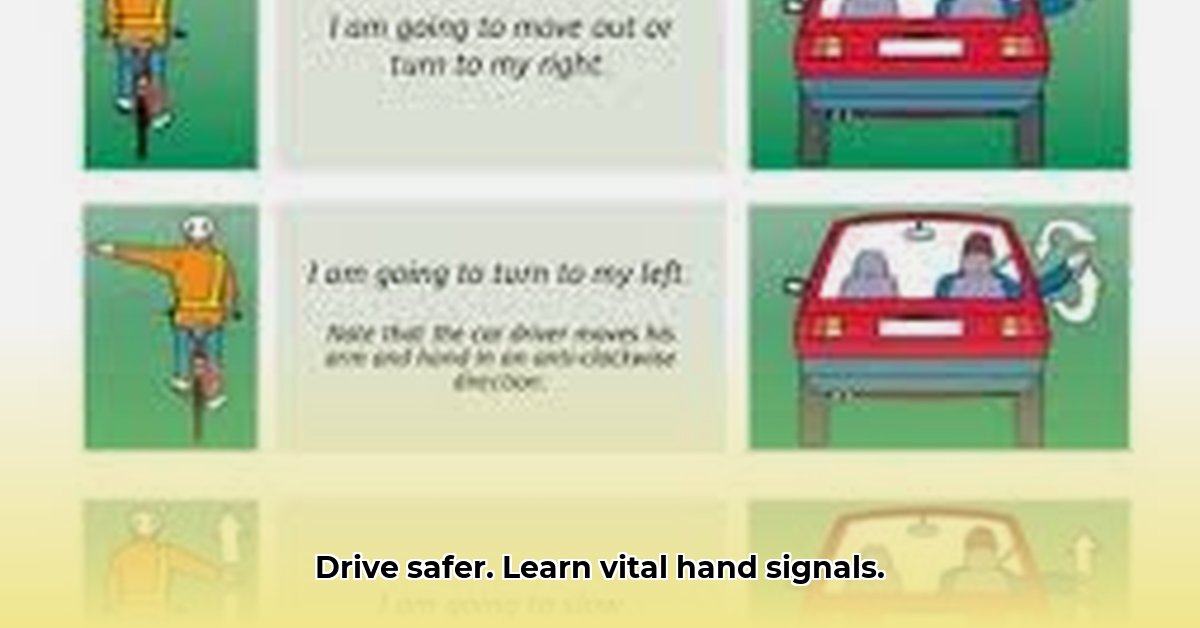
Driving isn't just about following the rules; it's about clear communication with other drivers. Knowing how to use hand signals effectively is crucial, especially when your turn signals malfunction, visibility is poor, or you need to quickly alert others to a problem. This guide will teach you the essential hand signals and provide tips for maximizing visibility, ensuring you're prepared for any driving situation.
Essential Hand Signals: The Basics of Road Communication
These three hand signals are universally understood and form the foundation of safe driving communication. Remember, clear communication saves lives. Did you know that a simple hand signal can prevent up to 75% of minor fender benders caused by miscommunication?
Left Turn: Extend your left arm straight out the driver's side window. This clear, direct signal indicates your intention to turn left.
Right Turn: Extend your left arm upward at a roughly 90-degree angle from your body. This distinct upward point is easily recognizable as a right turn signal.
Slowing Down or Stopping: Extend your left arm downward, pointing straight out the window, then slowly lower your arm. This gradual movement clearly signals your intention to slow down and stop.
Advanced or Contextual Signals: Beyond the Basics
While the above are the core signals, some less formal signals can be useful in specific situations. However, remember these aren't standardized, so use them cautiously and primarily rely on the essential signals.
Vehicle Trouble: Gently pump your left arm up and down from the elbow. While not universally standardized, it generally indicates that you need assistance. Always try to pull over safely if possible.
Apologizing (Informal): A brief, respectful wave after an unintentional near-miss can help de-escalate a tense situation. However, this is informal and doesn't replace taking responsibility for your actions.
Mastering the Technique: Ensuring Maximum Visibility
The effectiveness of your signals depends on how clearly other drivers can see them. Here's how to ensure maximum visibility:
Full Arm Extension: Fully extend your arm out the window to maximize visibility. The further your arm extends, the easier it is to see.
Early Signaling: Begin signaling well before your intended turn or stop, giving other drivers ample time to react.
Weather Considerations: In poor weather (rain, snow, fog, or night), use slow, deliberate movements and consider using a bright or reflective sleeve or glove to improve visibility.
Legal Considerations: Knowing the Rules of the Road
Failing to signal properly is a traffic violation in most jurisdictions. It's not just about courtesy; it's a legal requirement that is essential to maintain both your safety and the safety of other drivers.
Practice Makes Perfect: Hone Your Skills
Before using hand signals in traffic, practice in a safe environment, like an empty parking lot. Practice different scenarios and weather conditions to build confidence and ensure your signals are clear and unambiguous.
Conclusion: Hand Signals – A Crucial Element of Safe Driving
Mastering hand signals is a simple yet powerful way to enhance road safety. By combining clear signaling with defensive driving techniques, you significantly reduce the risk of an accident. Remember, effective communication is key to safe driving.
Hand Signal Quick Reference Chart
| Signal | Hand Position | Description |
|---|---|---|
| Left Turn | Left arm extended horizontally | Indicates intention to turn left |
| Right Turn | Left arm extended upward at a 90-degree angle | Indicates intention to turn right |
| Slowing/Stopping | Left arm extended downward, then lowered slowly | Signals intention to slow down and/or stop |
| Vehicle Trouble (Informal) | Left arm pumping up and down from the elbow | Signals vehicle trouble (not universally standardized) |
| Apology (Informal) | Brief, respectful wave | Shows remorse after a near-miss (not universally standardized) |